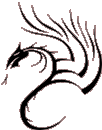INDIVIDUAL HERBS
| Pharmaceutical Latin: | Rhizoma et Radix Notopterygii |
| Common English: | Notopterygium Root Chiang Huo |
| Taste | Temperature | Entering Meridians | Dosage |
Acrid Bitter Aromatic |
Warm |
Bladder Kidney |
3-10g Maximum dosage: 30g Tincture: 2-4ml |
| Actions | Indications/Syndromes |
Releases the Exterior and disperses Cold |
Wind-Cold with chills, fever, headache, body aches and pains Usually used when accompanied by Dampness with joint pain, a general feeling of heaviness, sleepiness or occipital pain |
Expels Wind-Cold-Dampness, unblocks painful obstruction and alleviates pain |
Wind-Cold-Damp Bi especially in the upper limbs and back |
Guides Qi to the Tai Yang and Du channels |
Directs the other herbs to the Tai Yang and Du channels |
CONTRAINDICATIONS |
|
INCOMPATIBILITIES |
HERB/DRUG INTERACTIONS |
Rz. Ligustici Chuanxiong |
Rx. Saposhnikoviae
|
Rx. Angelicae Pubescentis |
Headaches and generalized body aches and pains associated with the common cold or painful obstruction. |
Pain due to External Wind-Dampness. |
Wind-Dampness. |
Rx. Angelicae Dahuricae |
Rx. Platycodi |
Rx. Saposhnikoviae |
Headaches. |
Skin conditions. |
Wind-Cold with aversion to Cold, fever, headaches and muscle aches. |
Rz. Curcumae Longae |
||
Wind-Cold. |
Wind-Cold-Damp Bi. |
Occipital headache from Wind-Cold without perspiration. |
Rz. Atractylodis |
Rx. Gentianae |
Rx. Saposhnikoviae |
Heavy-headed sensation. |
Red eyes from Wind-Heat attacking the head. |
Muscle aches and joint pain due to Wind-Cold-Dampness. |
Rx. Angelicae Pubescentis Du Huo Ram. Cinnamomi Gui Zhi Rx. Paeoniae Rubra Chi Shao Flos Carthami Hong Hua Rx. Clematidis Wei Ling Xian |
||
Arthritis of the upper body or upper limbs. |
Wind-Damp headache. |
General arthritis. |
Rx. Angelicae Pubescentis |
|
|
Rheumatic arthritis. Rheumatic fever. Rheumatoid arthritis. |
|
|
- Some schemes include this herb in the anti-rheumatic category.
- This is one of the major pain relieving herbs for surface ailments (headaches, joint pains and painful sores and inflammations).
- This herb is best suited for Tai Yang or occipital headaches.
- This herb has anti-bacterial, anti-fungal and analgesic properties.
- This herb is almost always combined with Rx. Angelica Dahuricae Bai Zhi for headaches and Rx. Platycodi Jie Geng for skin conditions.
- Rx. Saposhnikoviae Fang Feng is similar but more often used, due to its tonic properties.
- It excels at treating numbness and pain, especially in the upper back. It is good for upper respiratory infections with muscle aches and pains.
- Both Qiang Huo and Rx. Angelicae Pubescentis Du Huo expel Wind-Dampness, eliminate painful obstruction and alleviate pain. Qiang Huo is better for superficial Wind-Dampness and upper extremities. it is harsher and more appropriate for Wandering Bi. Du Huo is more moderate and is better for deeper Wind-Dampness and lower extremities and better able to regulate lurking Wind.
- Both Qiang Huo and Rz. Ligustici Gao Ben enter the Du channel. Qiang Huo expels Wandering Bi in the muscles and exterior, and is best for neck and shoulder pain and for freeing the joints by venting pathogens from between the sinews and bones. Its tendency to move upward is stronger than Gao Ben's which can reach the vertex but is better for lower body disorders.
- Both Qiang Huo and Ram. Cinnamomi Gui Zhi. dispel Wind-Cold. Qiang Huo is good at dispelling Wind-cold in the limbs, while Gui Zhi is better at expelling Wind-Cold from the upper back and neck.

